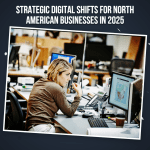Introduction
In a marketplace defined by rapid digitization and global competition, the capacity to anticipate customer needs is no longer a luxury; it is a strategic imperative. Predictive personalization, the practice of leveraging advanced analytics to forecast individual preferences and deliver bespoke experiences, has emerged as a cornerstone of modern business strategy. Organizations that excel in data acquisition, modeling, and activation can now influence decision making in real time, cultivating stronger customer relationships while improving operational efficiency. This article examines the analytic foundations, strategic advantages, implementation pathways, and governance essentials of predictive personalization, offering executives a comprehensive guide to navigating this transformative landscape.
1. From Data Collection to Actionable Intelligence
Predictive personalization begins with a robust data framework. Effective programs integrate five primary data streams:
- First-party behavioral data collected from websites, mobile applications, call centers, and point-of-sale systems.
- Transactional history encompassing purchase frequency, average order value, and payment method.
- Demographic and psychographic attributes such as age, location, lifestyle segment, and attitudinal markers.
- Contextual signals including device type, timing patterns, and location context.
- Third-party enrichment that supplements proprietary data with market-wide indicators of intent and spending power.
Once aggregated, data must be cleansed, deduplicated, and stored in a centralized environment, often a customer data platform (CDP) or cloud data lake. High-quality data underpins analytic rigor, ensuring that subsequent models generate reliable, reproducible insight.
2. The Analytic Engine: AI, Machine Learning, and Behavioral Modeling
Predictive personalization relies on statistical and machine learning techniques that translate historical patterns into forward-looking signals. Core methodologies include:
- Classification algorithms that segment customers by propensity to purchase, likelihood to churn, or sensitivity to promotion.
- Collaborative filtering that recommends products based on user similarity scores.
- Recurrent neural networks capable of learning sequential behaviors, thereby predicting next-best actions on a session level.
- Natural language processing that extracts sentiment and intent from customer communications, enhancing the relevance of chatbot responses and email copy.
AI systems continuously update model parameters as new data arrives, generating a self-reinforcing cycle of learning and refinement. The outcome is an ability to tailor offers, pricing, and content with unmatched precision, often at millisecond latency.
3. Strategic Advantages for Market Leaders
Organizations deploying predictive personalization at scale report measurable gains across four vectors.
3.1 Revenue Expansion
Personalized recommendations and promotions lift conversion rates, basket sizes, and repeat purchase frequency. Industry studies show revenue uplifts ranging from five to fifteen percent after full rollout of predictive engines, with luxury retail and direct-to-consumer brands often outperforming these averages.
3.2 Cost Efficiency
By aligning messages to individual intent, marketing teams reduce media wastage and suppress campaign fatigue. Predictive churn models enable proactive retention initiatives, lowering acquisition costs tied to replacing lost customers.
3.3 Customer Lifetime Value
Dynamic loyalty programs that adjust rewards based on predicted future spend foster deeper engagement, encouraging multi-product adoption and advocacy.
3.4 Competitive Barrier
First movers accumulate proprietary behavioral data that newcomers cannot easily replicate, solidifying long-term differentiation in crowded sectors such as financial services and telecommunications.
4. Implementation Roadmap
4.1 Governance and Executive Alignment
The initiative must be championed at the board and C-suite level, with clear accountability for data stewardship, privacy, and return on investment.
4.2 Data Infrastructure
Enterprises should adopt cloud architectures that support elastic scaling, real-time streaming ingestion, and open-standard interoperability. A mature data catalog with lineage tracking minimizes compliance risk.
4.3 Talent and Culture
Cross-functional squads combining data scientists, marketers, and domain experts accelerate time to insight. Ongoing education in data literacy ensures that frontline teams understand model outputs and act on them appropriately.
4.4 Experimentation Framework
Controlled trials, multivariate testing, and holdout groups validate incremental gains and inform budget allocation. A test-and-learn mindset mitigates the common pitfall of pursuing personalization without measurable rigour.
5. Sector Spotlights
Retail
Omnichannel retailers deploy predictive shelf algorithms that adjust digital endcaps in response to local weather and foot-traffic data, boosting seasonal assortments without manual intervention.
Financial Services
Banks leverage credit card transaction streams to predict life events, wedding planning, relocation, or new vehicle purchases, triggering personalized product cross-sell at key milestones.
Healthcare
Providers apply machine learning to electronic health records, proactively recommending wellness programs while adhering to strict privacy statutes, thereby reducing readmission rates and enhancing patient satisfaction.
Business-to-Business
Industrial equipment manufacturers use sensor telemetry to forecast component failure, offering tailored maintenance contracts that maximize uptime for enterprise clients.
6. Ethical and Regulatory Considerations
Predictive personalization must coexist with stringent data protection regimes such as Canada’s Consumer Privacy Protection Act and the United States’ evolving state-level statutes. Key obligations include:
- Explicit consent mechanisms that articulate value exchange in plain language.
- Data minimization policies that limit retention to clearly defined purposes.
- Bias detection protocols that assess model outcomes for disparate impact across demographic groups.
- Incident response plans that mandate rapid disclosure and remediation in the event of breach.
A proactive stance on ethics not only mitigates legal exposure but also cultivates trust, an increasingly scarce asset in digital commerce.
7. Measuring Success: KPI Architecture
Leading organizations track predictive personalization through a balanced scorecard encompassing:
- Financial metrics such as incremental revenue, average order value, and margin lift.
- Customer metrics including net promoter score, engagement depth, and churn reduction.
- Operational metrics covering model accuracy, data latency, and campaign cycle time.
- Compliance metrics that detail consent opt-in ratios and incident frequency.
These indicators form the basis for executive dashboards, enabling rapid course correction and continuous improvement.
8. Future Outlook: Toward Ambient Personalization
The next decade will see predictive engines embedded in edge devices, from connected vehicles to in-store smart shelves, creating ambient environments that adapt to consumer context invisibly. Advances in federated learning will allow decentralized model training, preserving privacy while sharing insights across ecosystems. Quantum-enhanced optimization promises to unlock new frontiers in real-time decisioning, shrinking recommendation windows from seconds to microseconds. Enterprises that invest today in scalable foundations will capture disproportionate advantage as these technologies mature.
Conclusion
Predictive personalization is reshaping the strategic landscape by merging rigorous analytics with nuanced understanding of human behavior. Organizations capable of harmonizing data quality, algorithmic sophistication, and ethical governance will outpace competitors, delivering experiences that resonate with clarity and purpose. As analytics evolve, the mandate for executives is plain: embed predictive intelligence at the core of business strategy or risk falling behind more agile, data-driven rivals.









